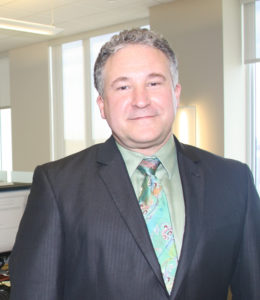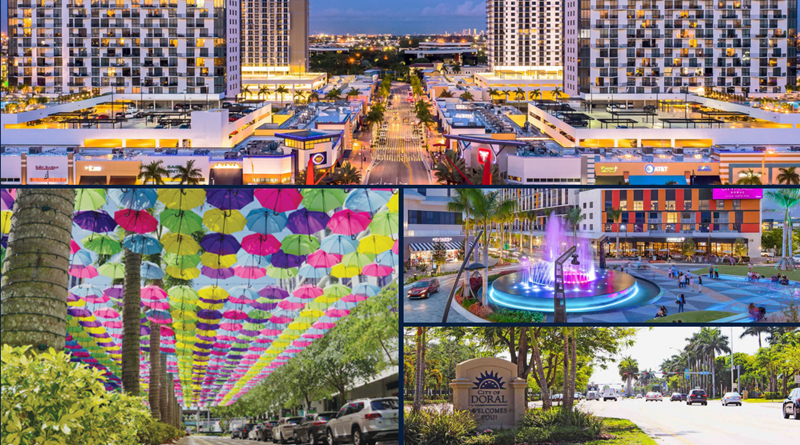DORAL CONTINUES TO GROW AND IMPROVE ITS REPUTATION
By: Edda Pujadas
“Doral continues to grow and improve its reputation.” This was stated by the Economic Developer of the city of Doral, Manuel Pila, after reviewing the economic analysis of Doral recently presented by Florida International University (FIU), which shows that Doral has an excellent reputation as a safe, modern, and efficient city for business.
“The economic momentum of our city allowed us to navigate the impacts of the COVID-19 pandemic better than most communities, and, in some aspects, we have emerged stronger than before and continue to grow,” said Manuel Pila.

“Doral has many obvious advantages such as its privileged geographical location, proximity to Miami International Airport and port, diverse business environment, and quality of life. Although it is already a great place to live, work, learn, play, and invest, it is also a young city that is still developing, maturing, and preparing to get even better,” added Pila.
The study shows that the city has continued to leverage its strengths. “Many trends that were already firmly established have continued, such as the constant proliferation of businesses in advanced industries. That should not surprise us, as we have large industrial spaces and the modern infrastructure necessary to meet the needs of such companies.”
Pila explained that the pandemic seemed to accelerate some trends, including the demand for industrial spaces. In recent years, Miami-Dade’s growing importance as an international trade and technology hub has created a strong need for such spaces, for which Doral is known.
Another improvement mentioned by Pila, comparing the previous study conducted by FIU in 2017 with the update done in 2024, is that at that time, there were no hospitals in Doral, and now there are several state-of-the-art healthcare facilities in operation with many more to come.
“Over the years, city leaders have prioritized many of the recommendations from the original FIU study, creating a significant economic development program based on strong relationships, data, and reliable service. We have continued to create local and international partnerships with economic development organizations and institutions to promote the city and attract various business sectors,” commented Pila.
The City of Doral has increasingly established and supported business assistance alliances, offering help to entrepreneurs and small and large companies. “Programs like Spend Local, Save Local are proof of that.”
TALKING NUMBERS
The FIU report highlights Doral’s economic competitiveness. The city has continued to develop at a level far exceeding Miami-Dade County and most communities in the state of Florida. This study focuses on population growth, housing, and job opportunities.
Since 2015, Doral’s population has grown by 42.3%, and in fact, every age group has increased, especially residents between 18 and 34, who experienced a 77.5% growth. People between 35 and 54 increased by 47.9%, while the number of households rose by 29.6%.
Obviously, the rapid population growth has also increased the number of homes and, consequently, diversified the type of construction, with many more multifamily structures of more than 20 units now comprising 35.8% of Doral’s total housing inventory compared to 21.4% in 2015.
The post-COVID-19 real estate market has seen unprecedented price increases for both buying and renting throughout South Florida. Housing prices in Doral are significantly higher than those in Miami-Dade County as a whole, due to the increase in investors who, based on the city’s advantages, want to invest in Doral.
In terms of employment, Doral continues to grow and diversify. The main sectors include management consulting services, scientific and technical services (1,470 workers), architecture and engineering (1,000 workers), and computer system design (862 workers).
Doral’s target industries, identified in Miami-Dade County’s One Community One Goal (OCOG) program, also show significant development, with notable sectors being trade and logistics (5,555 workers), life sciences and healthcare (4,740 workers), creative design (1,402 workers), financial services (1,361 workers), and information technology (928 workers). The retail sector also strongly supports the overall economy of the city.
The worker inflow/outflow analysis shows a significant mismatch between jobs located in Doral and where the city’s residents actually work. Of Doral’s employed population, only 5,990 people live here, and it is estimated that 85,542 jobs are filled by workers who live outside and commute to Doral daily.
The median household income in Doral increased to $97,280 annually compared to the $87,004 per year recorded for Miami-Dade County. It is estimated that 71.6% of the city’s workers are employed by private companies, and 22.7% are self-employed. Doral’s current unemployment rate is just 1.8%.
Regarding education, the city of Doral has one of the highest levels in the state of Florida and exceeds Miami-Dade County standards. Most significantly, the proportion of Doral residents with bachelor’s and graduate degrees is among the highest in the country for small and medium-sized cities. According to these estimates, 54.2% of the population aged 25 or older holds a bachelor’s degree or higher.
Today more than ever, Doral is seen as a productive city serving as an international crossroads for trade from all parts to all parts. The FIU report shows that it is growing and gaining reputation daily as a highly successful business center that has gained popularity nationally and outside the United States.

